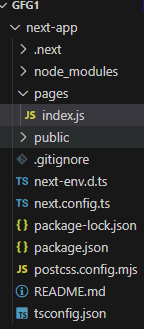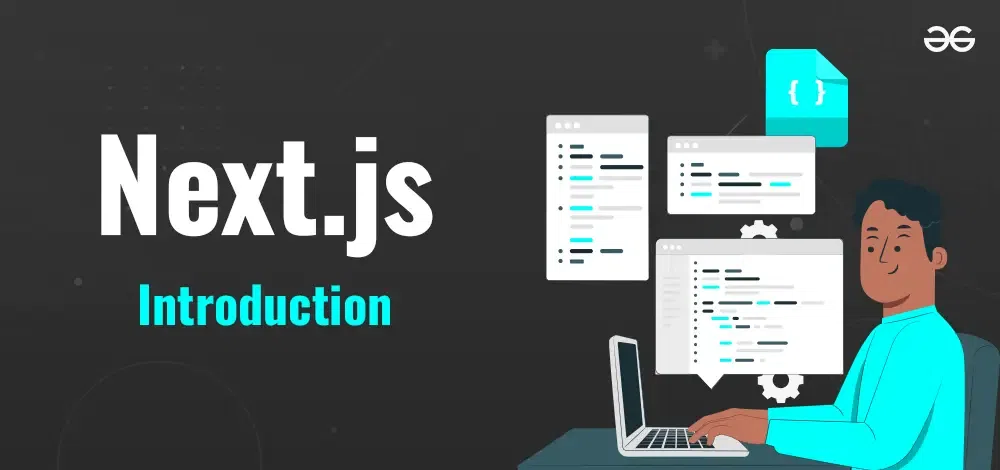Next.js Introduction (original) (raw)
Last Updated : 21 Mar, 2025
Next.js is a powerful and flexible React framework that has quickly become popular among developers for building server-side rendered and static web applications. Created by Vercel, Next.js simplifies the process of developing modern web applications with its robust feature set. In this article, we’ll explore the key concepts of Next.js, its features, and how to get started.
What is Next.js?
Next.js is a React-based framework designed to enhance the development of web applications by providing a variety of built-in features such as server-side rendering (SSR), static site generation (SSG), and API routes. It aims to simplify the complex aspects of web development, allowing developers to focus on building their applications rather than dealing with configuration and setup. Next.js is fast and works well with other tools and libraries.
History of Next.js
Next.js was created by Vercel (formerly ZEIT) to simplify the development of React applications with server-side rendering. The framework quickly gained popularity due to its performance optimizations and ease of use. The current stable version of **Next.js is 15.2.3, released on March 19, 2025. The framework continues to evolve, introducing new features with each update.
How Does Next.js Work?
Next.js operates by enabling both server-side rendering (SSR) and static site generation (SSG), allowing developers to choose the best rendering method for their application’s needs:
- SSR generates HTML on the server for each request, improving performance and SEO.
- SSG pre-renders HTML at build time, delivering faster load times and better scalability.
Both methods improve performance and SEO by ensuring fast, optimized content delivery.
Features of Next.js
- **Server-Side Rendering (SSR): Next.js allows developers to pre-render pages on the server at request time, providing better performance and SEO compared to traditional client-side rendering.
- **Static Site Generation (SSG): Next.js offers static site generation for pages that don’t change frequently. This process involves generating HTML pages at build time, which are then served to users directly from a CDN.
- **API Routes: Next.js provides a simple way to create API endpoints within your application, eliminating the need for a separate backend server.
- **File-Based Routing: Next.js uses a file-based routing system where routes are created by simply adding files and folders to the
pagesdirectory. This makes it easy to organize and manage your application’s structure. - **Automatic Code Splitting: Next.js automatically splits your code into smaller chunks, ensuring that only the necessary JavaScript is loaded for each page.
- **Hot Module Replacement (HMR): HMR allows developers to see changes in real-time without needing to refresh the browser, significantly speeding up the development process.
- **Built-In CSS and Sass Support: Next.js includes support for importing CSS and Sass files directly into your components, making it easy to style your application without additional configuration.
- **Image Optimization: Next.js 15 introduced built-in Image Optimization, which automatically serves images in the best format and size, improving performance across devices.
- **Streaming Metadata (Next.js 15): Streaming Metadata allows asynchronous metadata fetching without blocking page rendering or client-side transitions, improving the performance of your application.
- **Turbopack Performance Enhancements (Next.js 15): The Turbopack bundler has been optimized for faster compile times and reduced memory usage, enabling a better development experience.
Steps To Create Next.js Application
**Step 1: Install Node in Your System
Before using Next.js, you need to have Node.js installed. You can download and install Node.js from the official Node.js website.
**Step 2: Initialize the Next.js Project
Now create a folder for your project on the desktop navigate to the folder through your code editor and run the following command on the terminal.
npx create-next-app@latest
#OR
yarn create next-app
#OR
pnpm create next-app
Step 3: Configure your next.js app
Write the project name (default my-app) and choose other configuration options

Next.js Installation
Folder Structure

Folder Structure
Now, let us understand with the help of the example
JavaScript `
// pages/index.js export default function Home() { return (
Hello, World!
`
**Output

Next.js Introduction
Next.js Lifecycle
Every Next.js application has a lifecycle that includes various stages, such as initialization, rendering, and updating. Understanding these phases helps manage state, perform side effects, and optimize components effectively.
Initialization
This stage involves setting up the initial state and configuring the application. This is done during the initial load of the application.
Rendering Phase
- **getInitialProps / getServerSideProps / getStaticProps: These methods fetch data before rendering the page.
- **render(): This method returns the JSX representation of the component. It’s called during initial rendering and subsequent updates.
Updating Phase
- **getStaticPaths: Used for dynamic routes to determine which paths should be pre-rendered at build time.
- **useEffect / useLayoutEffect: React hooks used for managing side effects in functional components.
Unmounting Phase
- **cleanup effects: Clean up resources like event listeners or timers when components are unmounted.
